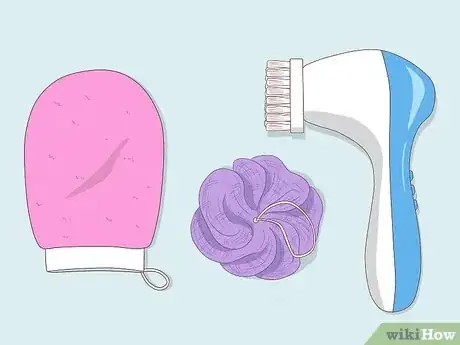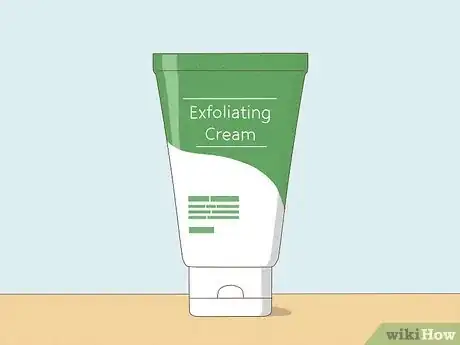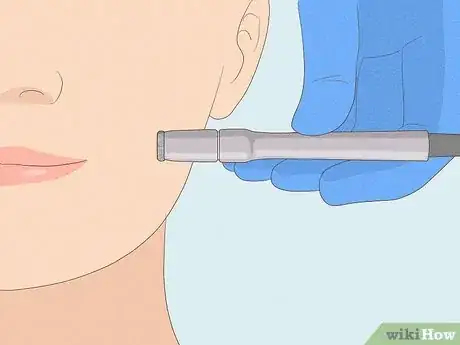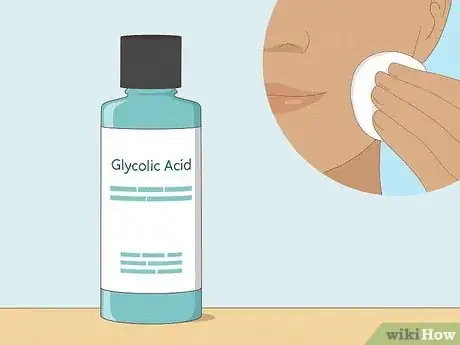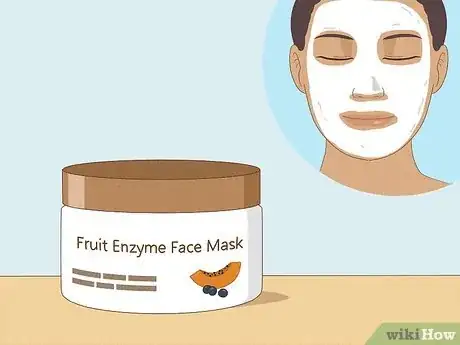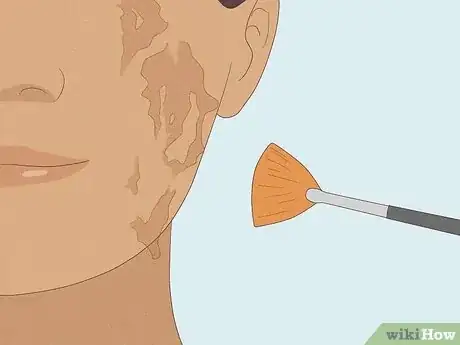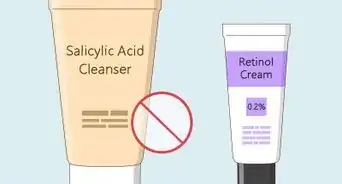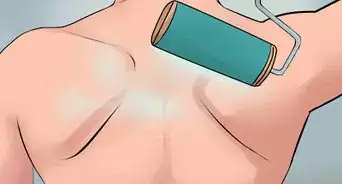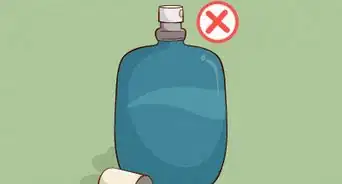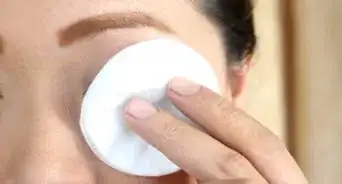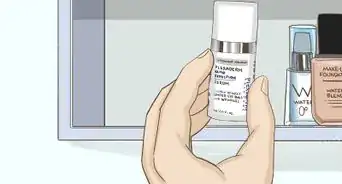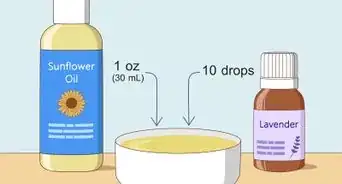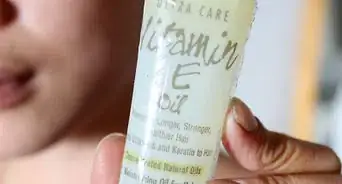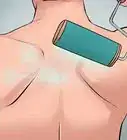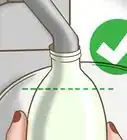This article was co-authored by Margareth Pierre-Louis, MD. Dr. Margareth Pierre-Louis is a board certified Dermatologist and Dermatopathologist, Physician Entrepreneur, and the Founder of Twin Cities Dermatology Center and Equation Skin Care in Minneapolis, Minnesota. Twin Cities Dermatology Center is a comprehensive dermatology clinic treating patients of all ages through clinical dermatology, cosmetic dermatology, and telemedicine. Equation Skin Care was created to provide the best in evidence-based, natural skin care products. Dr. Pierre-Louis earned a BS in Biology and an MBA from Duke University, an MD from the University of North Carolina at Chapel Hill, completed a residency in dermatology at the University of Minnesota, and completed a dermatopathology fellowship at Washington University in St Louis. Dr. Pierre-Louis is board certified in dermatology, cutaneous surgery, and dermatopathology by the American Boards of Dermatology and Pathology.
This article has been viewed 92,766 times.
Exfoliation is a type of skin therapy that involves removing the outer layer of dead cells by an abrasive material and/or chemical product. Removing dead skin cells via exfoliation rejuvenates your skin and helps to prevent pimples and blackheads, which develop when pores and sebaceous glands become clogged.[1] Exfoliating also give skin a youthful glow, fades discoloration over time, allows your skin care products to penetrate deeper into the skin, and helps makeup go on smoothly. Understanding your skin type helps to dictate what kind of exfoliation methods and products you should use.
Steps
Exfoliating by Mechanical Means
-
1Use a scrubbing pad or cloth if you don’t like exfoliating products. Mechanical exfoliation involves scrubbing your skin with some sort of abrasive pad or cloth or using a product with gritty particles or beads.[2] The simplest way to remove dead skin cells is scrubbing it with a moist or wet cotton face cloth. Cotton is soft and not especially abrasive, so you're removing dead skin mainly by friction. Wash your skin with warm water and a gentle cleanser prior to exfoliating to open up your pores a little better.
- Brushes and other equipment, like electric scrubbers, can be used in conjunction with your cleanser for daily exfoliation.
- Other choices include sponges, such as loofahs (a rough fibrous sponge made from the dried fruit of a tropical plant) and cellulose sponges, as well as special skincare brushes, pieces of pumice and microfiber cloths.[3]
- If you have sensitive skin, choose a microfiber pad or cloth that's not too abrasive. Normal and oily skin can handle loofahs and rougher exfoliators.
- Pumice stone is more appropriate for thicker skin on the heels of your feet and calluses of your hands.
- Always moisten a scrubbing pad or cloth first, then rub your skin in circular motions. Don't spend too much time in one place or else you might irritate your skin.[4]
-
2Use an exfoliating product if you want a deeper exfoliation. You might want to use a gritty compound for better results and a deeper clean. There are many cream-based products that contain abrasive materials, such as salt crystals, raw sugar granules, pumice particles, micro-beads, and finely crushed almond shells or apricot kernels.
- Ask your dermatologist for a recommendation based on your skin type and budget. Effective exfoliating creams don't have to be expensive.
- According to dermatologist Elizabeth Tanzi, people with sensitive skin should avoid using scrubs with abrasive compounds because it can lead to excessive irritation.[5] Stick with some warm soapy water and a soft face cloth or sponge.
- A simple and inexpensive home remedy involves making a paste with baking soda by adding some water. Add the paste to your pad, cloth or sponge and gently exfoliate your skin in circular motions.
- Focus on exfoliating rough, dry patches on your skin where your complexion is dull, flaky or uneven.[6]
Advertisement -
3Make an appointment for microdermabrasion. Microdermabrasion essentially involves gently sanding your skin (typically your face) to remove the top layer of skin cells, so it's considered a type of exfoliation also.[7] Microdermabrasion devices are typically coated with fine crystals or crushed diamonds on the tips to remove skin and buff it to improve your complexion. The therapy is also used to remove pimples, warts, moles and other non-cancerous growths.
- Make an appointment with your dermatologist for a microdermabrasion treatment for your face or feet. The sanding is not painful and typically takes between 30-40 minutes to treat your entire face.
- Microdermabrasion is also performed by many estheticians, as well as some massage therapists. Microdermabrasion devices and machines are widely available for home use.
- Like all other forms of exfoliation, a skin moisturizer should be applied after the microdermabrasion treatment.
Exfoliating by Chemical Means
-
1Use gentle exfoliating acids. In addition to mechanical or physical exfoliation with pads, sponges and gritty products, chemical exfoliation is also effective for removing dead skin cells.[8] Commonly used chemical exfoliators include alpha-hydroxy acids (AHAs), beta-hydroxy acids (BHAs), glycolic acid, citric acid and salicylic acids.[9] These acids essentially dissolve dead skin cells and also clean the pores of debris and oils.
- Prescription products have higher concentrations of acids and are applied by dermatologists, whereas over-the-counter products have lower concentrations and can be used at home.
- Daily application of exfoliating acids with cotton cleaning pads is okay for most skin types, unless your skin is especially sensitive. Don't leave acids on your face for much more than a few minutes to avoid irritation.
- If you have acne scars or sun damage, a chemical exfoliant is a good choice for minimizing discoloration.
- For oily and acne-prone skin, daily use of a glycolic acid cleanser with an exfoliating pad is recommended.[10] You can also get pads that are pre-soaked with AHAs and BHAs.
- Use of glycolic acids can increase your skin's sensitivity to the sun, so always apply a good sunscreen after treatments if you're heading outside.
-
2Use a product that contains enzymes. Applying enzymes to your skin can also remove dead skin and the surface layer of living skin by dissolving the glue-like compound that holds skin cells together.[11] These fruit-based enzyme products are gentle and non-abrasive to your skin. Like exfoliating acids, digestive enzymes are applied with cotton cleaning pads or something similarly soft.
- Enzyme-based products should be left on for more than just a few minutes to allow the protein to be dissolved. Aim for at least 15 minutes or so and then rinse off with water. No scrubbing is needed.
- Fruit enzymes are often found in cleansing facial masks, which are meant to unclog pores and remove dead skin.
- Fruits that contain protein enzymes include pineapple, papaya, kiwi fruit and figs.
-
3Consider a stronger chemical peel. A chemical peel is an acidic solution applied to the skin (typically the face) that dissolves the outermost layer of cells, which peel off over the course of a few days.[12] Chemical peels involve strong acids and remove both dead and living skin cells, which make them effective for not just exfoliation, but also for treating age spots, acne, sun damage and mild scarring.
- Chemical skin peels can be considered as topical, moderate or deep. Deep peels may require you to miss work for a week or more while your skin sheds and recovers.
- Estheticians can perform mild-to-moderate peels, whereas dermatologists are needed to perform or supervise deeper peels.
- The acids used are typically concentrated glycolic acids, trichloroacetic acid (like bleach), salicylic acid, lactic acid, or a combination of acids called Jessner's peel.
- Chemical peels cause an intense tingling or burning sensation and leave the skin looking bright pink afterwards.
Expert Q&A
-
QuestionWhich is better for my skin: mechanical exfoliating or chemical exfoliating?
 Margareth Pierre-Louis, MDDr. Margareth Pierre-Louis is a board certified Dermatologist and Dermatopathologist, Physician Entrepreneur, and the Founder of Twin Cities Dermatology Center and Equation Skin Care in Minneapolis, Minnesota. Twin Cities Dermatology Center is a comprehensive dermatology clinic treating patients of all ages through clinical dermatology, cosmetic dermatology, and telemedicine. Equation Skin Care was created to provide the best in evidence-based, natural skin care products. Dr. Pierre-Louis earned a BS in Biology and an MBA from Duke University, an MD from the University of North Carolina at Chapel Hill, completed a residency in dermatology at the University of Minnesota, and completed a dermatopathology fellowship at Washington University in St Louis. Dr. Pierre-Louis is board certified in dermatology, cutaneous surgery, and dermatopathology by the American Boards of Dermatology and Pathology.
Margareth Pierre-Louis, MDDr. Margareth Pierre-Louis is a board certified Dermatologist and Dermatopathologist, Physician Entrepreneur, and the Founder of Twin Cities Dermatology Center and Equation Skin Care in Minneapolis, Minnesota. Twin Cities Dermatology Center is a comprehensive dermatology clinic treating patients of all ages through clinical dermatology, cosmetic dermatology, and telemedicine. Equation Skin Care was created to provide the best in evidence-based, natural skin care products. Dr. Pierre-Louis earned a BS in Biology and an MBA from Duke University, an MD from the University of North Carolina at Chapel Hill, completed a residency in dermatology at the University of Minnesota, and completed a dermatopathology fellowship at Washington University in St Louis. Dr. Pierre-Louis is board certified in dermatology, cutaneous surgery, and dermatopathology by the American Boards of Dermatology and Pathology.
Board Certified Dermatologist Both work well for removing dead skin and smoothing out the surface of your face. However, I recommend chemical exfoliants because they're effective without the risk of injuring your skin.
Both work well for removing dead skin and smoothing out the surface of your face. However, I recommend chemical exfoliants because they're effective without the risk of injuring your skin.
Warning
- There can too much of a good thing with exfoliation. Severely red, tight or dry skin is a sign of inflammation and an indication you should decrease the frequency (or strength) of your exfoliation treatments.[14]
References
- ↑ Margareth Pierre-Louis, MD. Board Certified Dermatologist. Expert Interview. 15 May 2020.
- ↑ Margareth Pierre-Louis, MD. Board Certified Dermatologist. Expert Interview. 15 May 2020.
- ↑ https://www.ascpskincare.com/media/consumer_education_exfoliation.php
- ↑ Margareth Pierre-Louis, MD. Board Certified Dermatologist. Expert Interview. 15 May 2020.
- ↑ http://www.doctoroz.com/blog/elizabeth-tanzi-md/skin-clinic-how-properly-exfoliate
- ↑ http://www.huffingtonpost.com/2015/05/12/exfoliate-face-how-to_n_2528493.html
- ↑ https://www.aad.org/public/diseases/cosmetic-treatments/microdermabrasion
- ↑ Margareth Pierre-Louis, MD. Board Certified Dermatologist. Expert Interview. 15 May 2020.
- ↑ https://www.ascpskincare.com/media/consumer_education_exfoliation.php
- ↑ http://www.doctoroz.com/blog/elizabeth-tanzi-md/skin-clinic-how-properly-exfoliate
- ↑ https://www.ascpskincare.com/media/consumer_education_exfoliation.php
- ↑ https://www.ascpskincare.com/media/consumer_education_chemical_peels.php
- ↑ http://www.huffingtonpost.com/2015/05/12/exfoliate-face-how-to_n_2528493.html
- ↑ Margareth Pierre-Louis, MD. Board Certified Dermatologist. Expert Interview. 15 May 2020.

